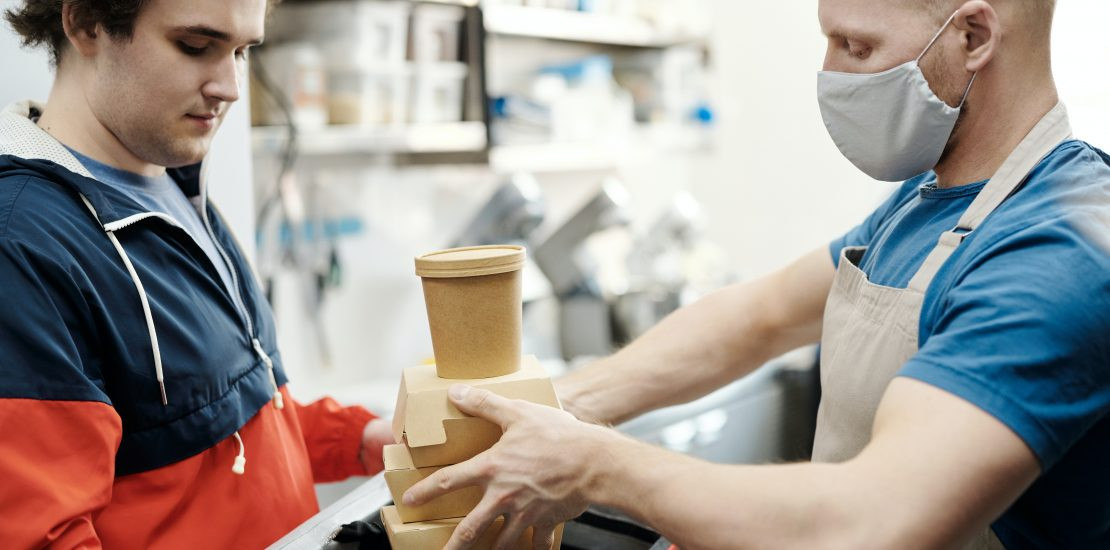Market Overview
As per our estimates, India's cloud kitchen market size will cross US$1 billion by the end of 2022. An average Indian orders food 5-7 times a month compared to 23 times in China, more than 30 times in the US, and 45-50 times in Singapore.
A few studies by the National Restaurant Association of India (NRAI) show that around two-thirds of India's restaurant industry is unorganized. Also, there are only three restaurant chains in India with more than 500+ locations, which is nowhere compared to 25 and 75 in the US and China.
One of the industry sectors affected the most due to the COVID-19 pandemic globally was the food industry. With nationwide lockdown in the initial phase and night curfew in subsequent phases, people could not go for dine-out, and delivery was the only option. In this scenario, restaurants incurred a huge loss, and many had to shut their businesses permanently. However, cloud kitchens could survive during this worst condition as they rely completely on delivery and don't provide any dine-in facility.
India is a highly fragmented and unorganized market for the food industry. It has a huge opportunity to invest in cloud kitchens rather than investing a huge amount in dine-in restaurants.
The COVID-19 pandemic is driving the demand for cloud kitchens in India as people prefer ordering at home rather than going out for food. According to one of the studies, it is estimated that the food ordering value has increased by 50%-60% since the lockdown. And it is expected to increase during this year.
The majority of the growth will come from Tier 2 & 3 cities with more of a youth population. Cloud kitchen businesses will have to focus on a few things if they want to achieve higher growth in this scenario:
- Food Items on Menu: People prefer healthier food over other post-pandemic foods, so if the restaurant can offer healthy or vegan food items, the kitchen can differentiate them.
- Packaging plays a major role in the food industry, especially post-pandemic. The food item is usually delivered in 20-30 minutes once prepared and packed. Also, air-tight and non-plastic packaging is preferred by most customers these days.
- Contactless Delivery: COVID-19 pandemic has forced everyone to follow social distancing, which also applies to food delivery. So a cloud kitchen should follow contactless delivery, and the delivery partner should avoid touching the food directly.
Common Mistakes that Lead to Failure
Though the cloud kitchen business offers various benefits, including lower costs, quick turnaround times, limited staffing, ease of customer acquisition, etc., a few associated factors can destroy it and lead it to failure.
- Improper Food Pricing: Ignorance of all associated costs, including food material, labour, taxes, rent, marketing, and logistics & delivery
- Lack of Innovation and Technology: Very limited or no use of the latest technologies for day-to-day operations such as ordering systems, automation, delivery network, customer service, packaging, etc.
- Lack of Customer Interaction: No personal interaction with existing customers to understand their feedback/review about food and services, and their preferences for menu
- Lack of Structured Process: No SOPs or standardization in an operating process that can be useful in streamlining the delivery-only process for the success of the cloud kitchen business
- Lack of Market Research: Very limited or no investments in market research to understand current market trends for product differentiation, pricing, competitors, consumer behaviour, location, etc.
Setting up a cloud – the kitchen in India
Operations
- Space – 800 – 1200 Sq. Ft.
- Licence – FSSAI, Health Trade Licence, Tax Registration
- Kitchen Equipment – 8 – 13 Lakhs
- Staff – Head Chef, Helper, and Commis
Marketing and Sales
- Online Customer Management (Software)
- Social Media
- Online Delivery Platforms
- Branding and Packaging
- Guerrilla Campaign
- POS and Inventory






